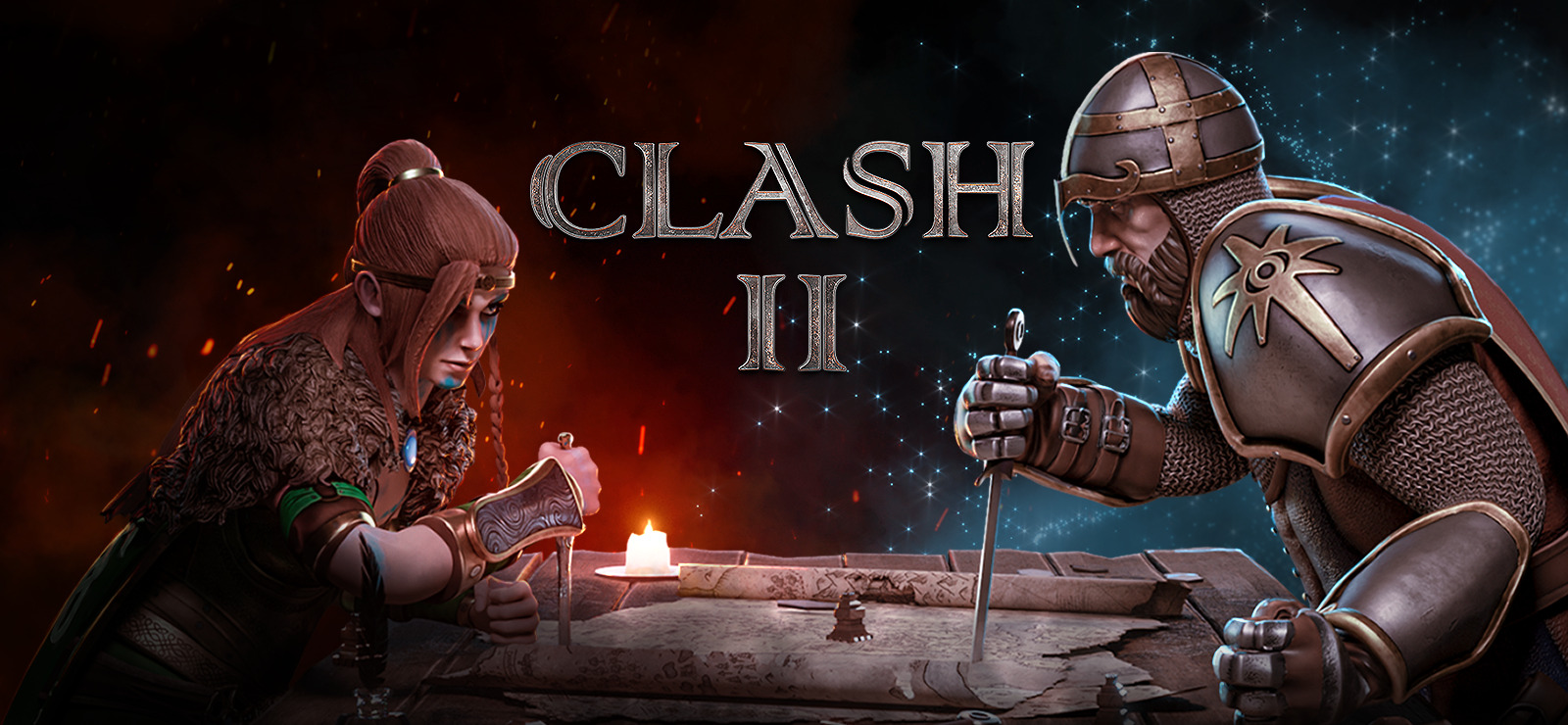Recently, I had the opportunity to play one of the latest turn-based strategy games in the vein of Heroes of Might and Magic. Now, if you are a big fan of Heroes like I am, you get excited whenever you see a game that looks heavily influenced by it. Clash 2 brings us to a land of ancient magic where two rival factions battle for the land. Let’s see if it can stand up to expectations or if it falls short on the battlefield.
In this review, I am going to cover:
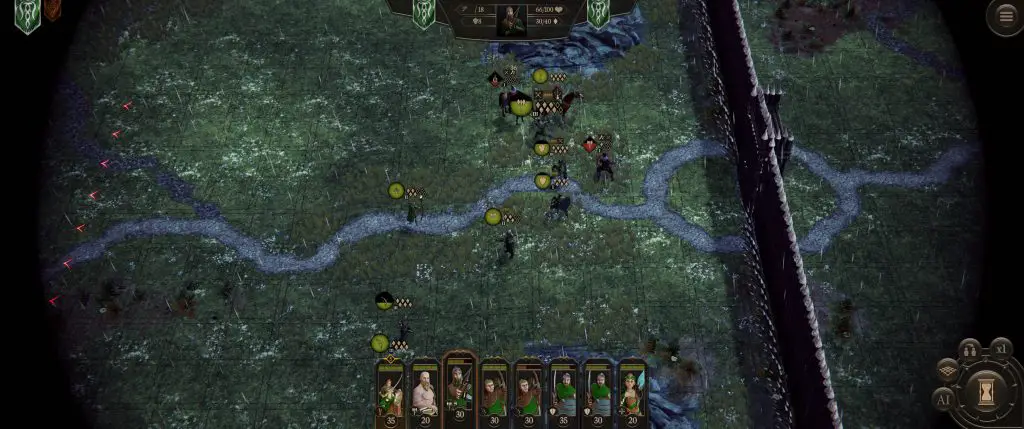
Story
Clash 2 takes place in a dark fantasy world where two factions have been stuck in combat for many years. The Purians have come to this land to convert the natives to the faith of the Holy One or kill all who resist. The Heathans have lived on this land for generations and are prepared to fight for their magical lands in the name of the Old Gods. It is up to you who will conquer or fall.
Game Modes
There are two different game modes in Clash 2. The first is the campaign and the second is the skirmish mode. Let’s look at some of the differences between the two.
Campaign
The campaign mode has two different scenarios that you can play. One follows Elena of the Heathen faction as she fights to lead what is left of her people against the invaders. Will her faith in the Old Gods be enough to save her people? The other campaign follows Harwig de Trevil of the Purians. He has come to claim the land in the name of The One God. Will you help him claim the land and rid it of any Heathens that resist conversion?
Both campaigns are nicely narrated at the beginning of each chapter. There are 6 chapters per faction for a total of 12 total chapters to play. Some of the chapters can be completed relatively quickly if you are not fully exploring the map and strictly going for objectives. Other chapters do require a bit more work, such as fully upgrading a base before the chapter can end. Overall, the story was enjoyable and well-written.
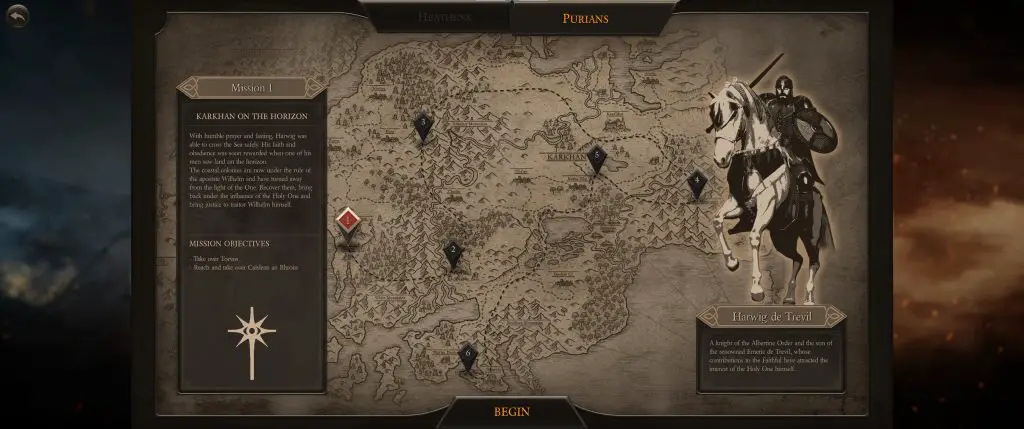
Skirmish
While the campaign mode feels quite full of content, the skirmish mode in Clash 2 is sadly lacking. At the time of my writing this, there was only one map to play on, and it was only for two plays. So you could play hotseat, or you could play one-on-one against the computer. The computer player didn’t have any difficulty setting either.
There were just a few options that you could change since you couldn’t change the map. You could pick the faction for each of the players. A settings section allowed you to change the time of day, the season, and the weather. That was about it. So, there are not a lot of options there either. It is clear that the skirmish mode was not the focus of the game for launch.
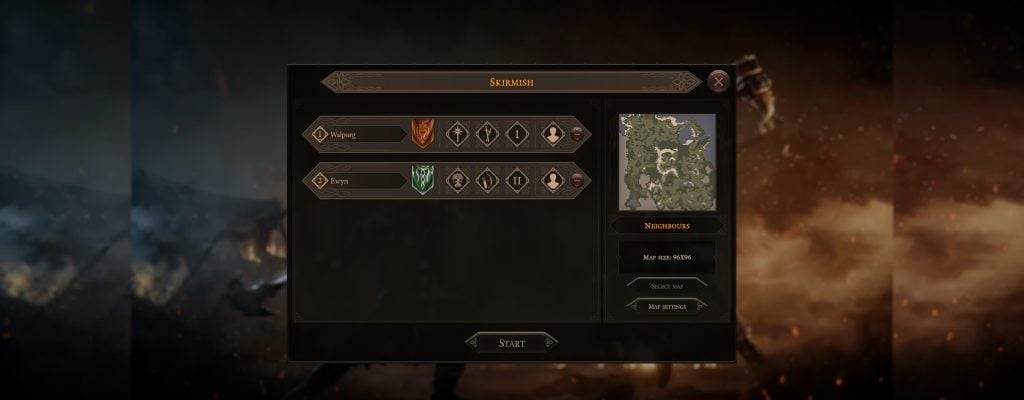
Gameplay
So, now we have talked a little about the different modes of the game. Let’s talk about the actual gameplay once you have picked a mode. We can break the gameplay down into three different sections. Each turn, you will be exploring the map, building out your base, and more than likely engaging in combat.
Map
For the most part, the maps in the campaign all felt a relatively good size. There were quite a few things spread around each map with a nice spacing. It didn’t feel like you had a lot of downtime between battles or items to pick up. All the maps were littered with a pretty good variety of things. These included treasure, signposts, campfires, mines, tents, artifacts, and more.
The campfires were always a nice boost to help you move a bit further in a turn. The tents always had an option between two free units to add to your army. The artifacts also gave you a nice passive advantage in combat. However, I wasn’t sure how to share them with my other champions if I ended up having more than 3 on one person.
Once your champions have run out of movement for the turn, you will always want to make sure you have something queued up at your base before ending the round.
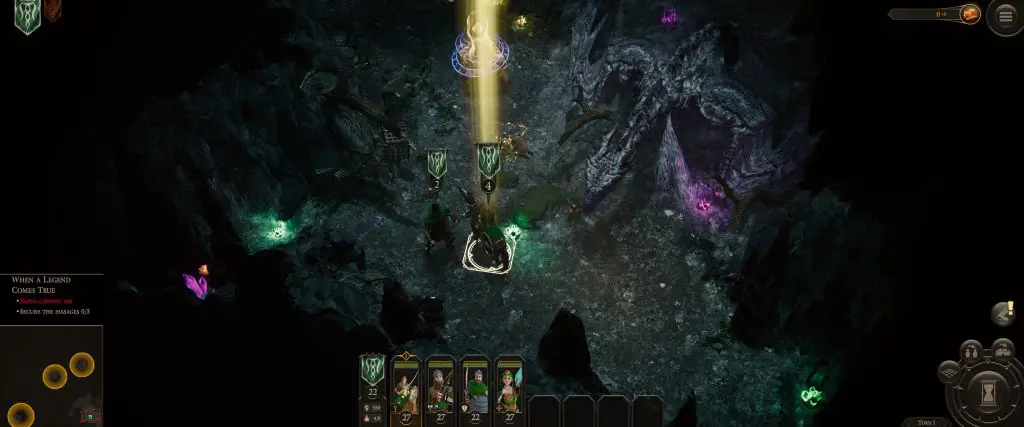
Bases
Now, I try to judge every game that I play on its own merit. Sometimes, it can be hard, though, when there are so many similarities to a classic game. I will say that the base building in Clash 2 didn’t quite follow the standard formula. There are only 2 types of resources. Gold and population. The gold is used for everything from hiring units to researching upgrades and adding new buildings to the base. The population is only used when leveling up the base to tier two or tier three. It is also used to hire the lowest-level unit for either faction, which can be nice in a pinch.
The buildings have no prerequisites other than needing to be at a specific tier for the ones that have higher-level units. Speaking of units, they felt fairly similar between the two factions, with the exception of some special abilities. The Purians had units with abilities like pike wall, shooting stance, and an AOE heal. This showed that the Purians were trained and focused on staying in battle formations.
The Heathens, on the other hand, had units with abilities like living wall, animal killer, and single target heal. Thematically, this allowed them to be better equipped for taking out the neutral inhabitants on the map, such as wolves. However they were not equipped for the invasion of the Purians. Not to say they cannot hold their own in a fight though.
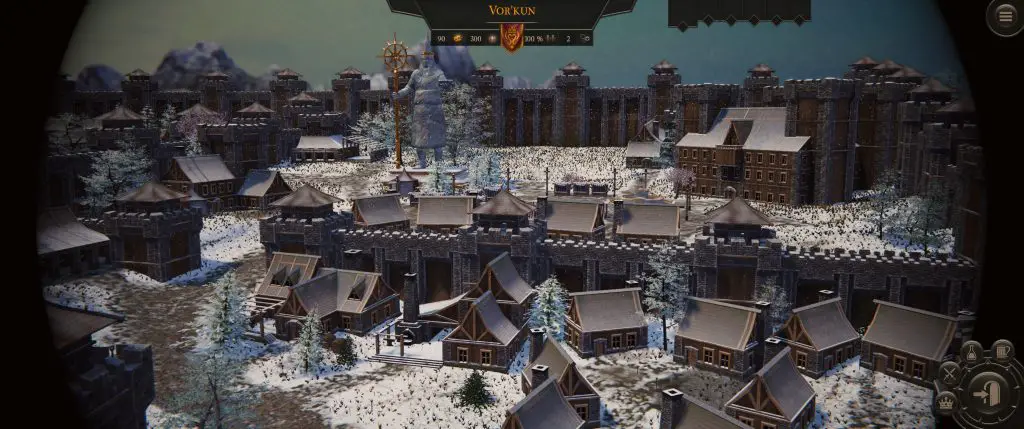
Lastly, we will talk about the upgrades that are available in each base. Once a building has been created, it also unlocks a unit and its upgrade options. These upgrades, such as increased attack or defense, give your units bonuses in battle. There are also upgrades to the base itself. These include things like support from a neighboring clan, which decreases the cost of units or increases the healing rate of units while they are at the base.
Combat
Once you have amassed an army, you can head into combat. That could be with the neutral inhabitants on the map, who are defending locations, or with the opposing player. Before engaging, you are able to see a combat rating from the world map. This tells you the probability of a win for your army. The three ratings are low, moderate, and high. A low rating is not impossible, but you will more than likely incur heavy casualties.
After engaging an enemy on the map, a pre-battle report pops up. This gives you a chance to review the opposing forces. You can also position your own units where you would like. When you are happy with your positioning, then you can begin combat. There are also the options to withdraw or autobattle.
In combat, you can see each unit’s health and action points. In most cases, it costs one action to move and two actions to attack. These can be done in any order. This allows for a lot of tactical depth. Often I would step forward with an archer to take a couple shots before stepping back behind my more heavily armored soldiers.
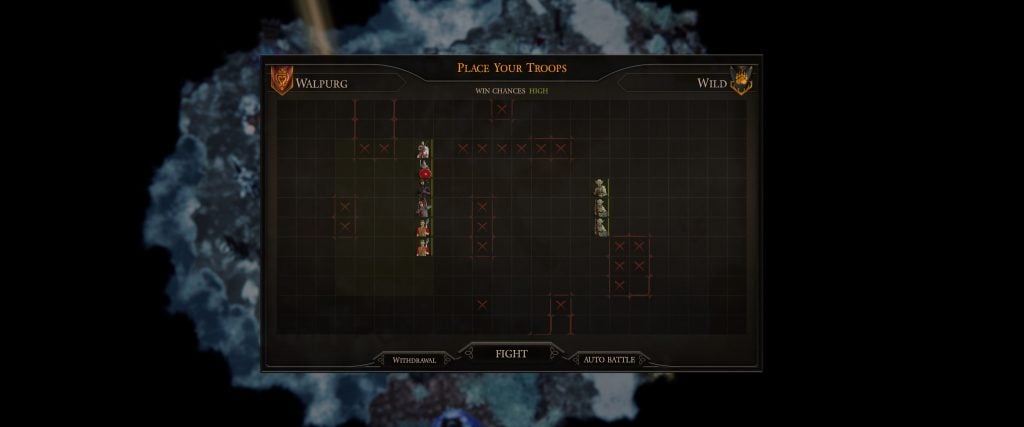
Clash 2 has a very nice preview system. You can select any unit, friend or foe, on the battlefield to see their movement and ranged attack radius. While still selected, you can move your mouse around to see how many action points they will have left at a given location. This is very helpful against ranged units because it allows you to see exactly where you can position without being in range of fire, even if they move forward.
Unlike many games in this genre, the units in Clash 2 don’t stack. This means they have their own health bar and experience points. You can’t stack 100 units in one space and single-hit targets like other games in the genre. The max level for units is three. Other than your champions who can level up higher. This adds to the tactics of the game because a squishy unit now stays squishy and forces you to stay in a formation that will protect your weaker units.
Combat is enjoyable but does have a few downsides. First, there is not a wide range of battle maps. By that, I mean maybe five or six total configurations. There are also no terrain effects other than the rare battle map that has barricades. These gave a debuff to ranged attacks through it and made it slower to maneuver past. Lastly, the ranged units can be pretty overpowered. With the ability to see the enemy’s range, it is pretty easy to bait most opponents. You can stay out of their range long enough to take out the majority of the opposition. By the time they can finally hit you, there are too few left to matter.
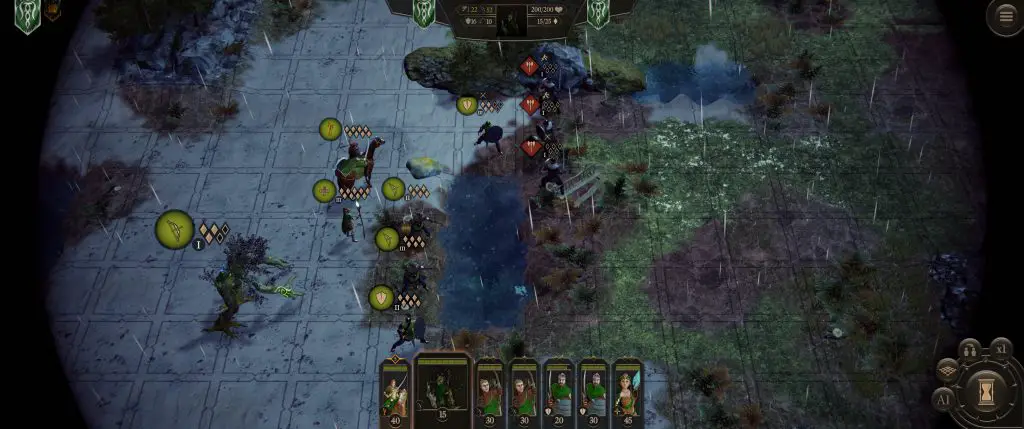
Needs
To me, Clash 2 felt a little on the light side when it came to content. Especially for a fully launched game. Granted, the developers did post that the 1.0 release was just the first step. They plan to continue supporting the game with future updates. Those updates are supposed to include more content, such as maps for skirmish mode. I hope that they plan to add more than just maps. Here are a few of the things I am hoping to see from those updates.
Combat still needs more. As I mentioned previously, there needs to be more variety on the battlefields. This means different types of terrain. Maybe even something archers cannot shoot over. It would also help to have some sort of terrain effects from different biomes. Different types of terrain might also help prevent the player from being able to kite the opponent around the map.
Factions could use a little more variety to set them apart. Maybe some more unique abilities. Even the different commander classes felt the same between the factions. I personally think there needs to even be more than just two factions. I was excited when I saw that there were wolves and bears in the games. Sadly, there is no way to have them in your army. Additional factions would be a huge way to increase the replayability of the game.
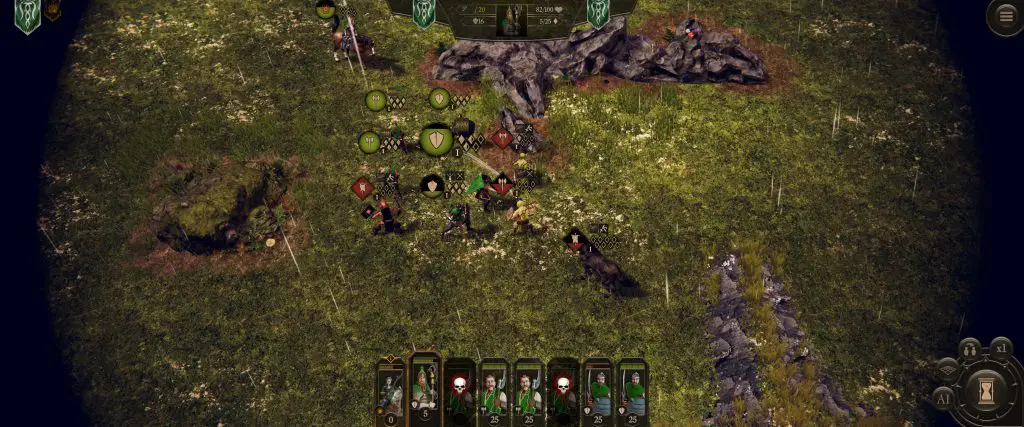
Skirmish mode needs a lot of help. I know they said maps are coming, but we need a lot more than that. Yes, there needs to be bigger maps with higher player counts, but we also need more variety in the settings. A difficulty setting for the AI would be really nice. It would also be nice to see different options for win conditions. Instead of just the last man standing, there could be options for capturing the most relics or defeating a really strong boss on the map before your opponent does. Something to change it up and keep players around. Lastly, I think the ability to play Steam Remote Together is a much-needed addition.
Conclusion
As always, I do my best to provide all the information, both good and bad, so that we can decide if this is a game worth picking up or leaving on the battlefield. I don’t think that Clash 2 should be completely passed on. I think it has the potential to be a good addition to the Heroes of Might and Magic genre, but I do not think it is there yet. If the developers are true to what they posted on launch day and version 1.0 is just the foundation, then Clash 2 might be worth picking up after it has had a few of those updates.
Right now, it just doesn’t have enough content. I think that the content that is there is a good start. A good foundation. However, there needs to be more before it is something that I can recommend to people. So, stick around and keep an eye on this one. Hopefully, we will see it grow into something great in the coming months.
You can find Clash 2 on both Steam and GOG.
This review key was provided by the developer Prime Bit Games SA.

